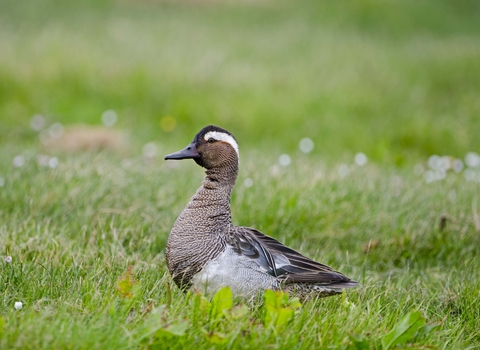
Drake garganey ©David Tipling/2020VISION
Garganey
This scarce breeding duck is a summer visitor, spending the winter in Africa. Although large flocks can be found in their wintering grounds, they are usually only seen in pairs or small groups in the UK.
Enw gwyddonol
Anas querquedulaPryd i'w gweld
March to OctoberTop facts
Stats
Length: 39cmWingspan: 62cm
Weight: 380g
Classified in the UK as Amber under the Birds of Conservation Concern 4: the Red List for Birds (2021). Protected in the UK under the Wildlife and Countryside Act, 1981.
